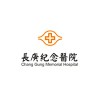
Video-Based Functional Performance and Assessment Following Stroke
StrokeFor hemiplegic, stroke patients wheelchair transfers is a critical, safety-related area of physical function. This project will develop a personalized training and clinical assessment instrument based on the Video-Based F-PAT (Functional Performance Assessment and Training.) The objectives of the study are: (1) Enhance the pilot F-PAT web site to allow clinicians password-protected access to the digitized video and assessment information; and (2) train an Occupational Therapist collaborator to create the personalized videotapes for patients to take home with them. This study has the dual goal of evaluating the effectiveness of the personalized training videotapes and the effectiveness of the video-based assessment methodology.

Enhancing Sleep Dependent Consolidation by Non-invasive Brain Stimulation
StrokeAgingStroke, one of the most common causes for acquired adult disability, is not only a burden for the individual but also for his or her close relatives and caregivers. Functional recovery is commonly associated with the re-acquisition of lost skills. This skill (re-)acquisition is separated into different phases during which learning takes place while the skill/movement is actively performed - so called online learning - or during the time of non-performance between the training - so called offline learning or consolidation. During the initial phase of training, performance improvements are commonly steep (online learning). During the following processes of consolidation, which often depend on sleep, memory traces are being modified and stored for long-term memory retention leading to a further improvement without additional training (offline learning). Previous studies focusing on individuals after stroke could show a beneficial effect of sleep on motor skill acquisition. As an intervention, transcranial electrical stimulation (tES) with motor tasks could show beneficial effects on motor skill acquisition. tES is a method to stimulate an area of the brain non-invasively and this is done by applying low voltage current to the scalp that lies in close proximity to the target brain region. In the current study, stimulation is performed during sleep and types of stimulation resemble natural sleep physiology: slow-wave and spindles. As slow-wave and spindles are shown to be important for memory consolidation, it is hypothesized that applying physiologically-inspired stimulation could enhance memory consolidation in individuals after stroke. It is known that patterns of sleep physiology change in older individuals, thus, this population is also investigated in the current study. It is interpreted and discussed that older individuals do not benefit from sleep as much as younger individuals do. Thus, it is hypothesized that applying physiologically-inspired stimulation could enhance memory consolidation in healthy older individuals.

The Effect of Education Based on the Chronic Care Model (StrokeCARE) in Patients With Ischemic Stroke...
StrokeIschemic1 moreStroke is the third leading cause of death worldwide and is defined as neurological deficit due to ischemic or hemorrhagic causes. The risk of death in the 30 days following recurrent stroke was reported to be between 23% and 41%, and the risk of new disability was between 39% and 53%. Therefore, patient self-management is important in preventing recurrent stroke. The aim of this study was to evaluate the effect of education and telephone follow-up based on the Chronic Care Model on self-management, quality of life and patient satisfaction in patients with ischemic stroke. The study is a randomized controlled experimental study. A total of 68 patients (34 interventions and 34 controls) were randomized into a computer program with 80% power, 95% reliability and 0.05 margin of error. Patients were included in the study according to the inclusion criteria and randomization list. The self-management support component of the Chronic Care Model was implemented using the 5A (ASK, ADVICE, ASSESS, ASSIST, ARRANGE) methodology. The Conceptual-Theoretical-Experimental structure of the research was created. A training booklet for stroke patients was created within the scope of the Chronic Care Model self-management support component. After the pre-tests, the patients who were included in the intervention group were given discharge training with a booklet prepared based on the Chronic Care Model and containing information and recommendations on self-management strategies during their stay in the hospital (0 months). These patients were followed up by telephone on the 7th day, 15th day, 1st month and 2nd month after discharge. No intervention other than routine hospital follow-up was performed for the patients included in the control group. The patients who were included in the control and intervention groups were performed to post-tests at the 3rd month outpatient clinic control and metabolic variables of the patients were obtained from the patient clinical information system.

Evaluation of the Use of the Atalante System in Patients Presenting a Non-traumatic Hemiplegia in...
StrokeStroke4 moreThe SPIRIT study is interventional, national, prospective, open, bicentric each patient being his/her own control. It is conducted to assess the safety and performance of the Atalante exoskeleton system in patients presenting a non-traumatic acute-subacute hemiplegia. The primary endpoint is defined by the patient's ability to perform the 10 MWT with the Atalante system. The study will include 16 patients and takes place in two french rehabilitation centers.

Validity Reliability of 3 Meter Backward Walk Test in Stroke Patients
Stroke SyndromeBalance; Distorted2 moreThe 3 m walk-back test is used to assess neuromuscular control, proprioception, protective reflexes, fall risk, and balance. In a study of healthy elderly adults, a 3-m walk-back test showed better diagnostic accuracy compared to the most commonly used measurement methods for falls in the past year. Reliability is extremely important, especially for research and clinical applications. In order to assess the risk of falling, measurement methods need to be reliable and change accurately over time. 3 m walk back test was found to be reliable in healthy elderly individuals. However, there are no studies investigating the validity and reliability of this test in stroke patients.

Efficacy of Adhesive Strength of New Hydrogel Formulation
StrokeAcuteThe study will look at the stickiness of a new skin adhesive incorporated into a new next generation geko™ device called the geko™ X-T3 and compare it to the adhesive currently used into the geko™ T3 device. The study is for people who are in hospital in the Acute Stroke Unit, and who will be receiving daily treatment with the geko™ T3 device in line with UK guidelines as part of their standard acute stroke care and venous thromboembolism prevention.

Impact of Video-based Information Regarding Functional Rehabilitation
StrokeAcute5 moreAt CHUS Fleurimont, one in five patients hospitalized for this condition needs to be transferred to an intensive functional rehabilitation unit (URFI) located in another establishment of the Centre intégré universitaire de santé et de service sociaux de l'Estrie - Centre hospitalier universitaire de Sherbrooke (CIUSSS de Estrie-CHUS). Patients and their relatives must therefore adapt to a new environment and a new care team, which can cause additional concern and uncertainty for their new condition. Thus, the importance of educating the patient and their family so that they understand the nature of the stroke, as well as the elements and stages of rehabilitation that lie ahead, are essentials so that they can make an informed choice about acceptance and type of rehabilitation. However, to date, little material is available to facilitate communication between the professional and the patient and his/her family. In this perspective, our research team has developed a video which aims to improve the knowledge of people and loved ones on intensive functional rehabilitation (RFI) and its care settings. The objectives of this study are: Evaluate the effect of viewing the video on post-stroke patients and their relatives on: Perceived stress Anxiety Knowledge on intensive functional rehabilitation Measure participants satisfaction regarding the video Evaluate the association between socio-demographic outcomes (age, sex, degree of impairment, relation with the patient, NIHSS, MRS) and perceived stress, anxiety and knowledge regarding rehabilitation.

Multi-mode Stroke Rehabilitation System: Development and Validation of Clinical Efficacy
StrokeCerebrovascular Disorders1 moreThe specific study aims will be: To develop the novel, digital, and interactive MSR system of arm and hand with integrated digital action observation therapy (AOT) and mirror therapy (MT). To pilot usability testing for examining the feasibility of this new MSR system from the users' experiences and feedback. To examine the treatment effects of digital AOT, digital MT and a control intervention in patients with stroke by conducting a randomized controlled trial. To identify who will be the possible good responders to digital AOT and MT based on their baseline motor function and mental imagery abilities.

Effects of Supplementation With Amino Essential Acids on Circulating Albumin Levels in Stroke in...
Stroke RehabilitationIn addition to its physiological functions, serum albumin plays a role of neuroprotection in cerebrovascular stroke. The circulating levels of albumin may be reduced in patients with stroke due to the presence of a systemic inflammatory state and to the inadequacy of protein-energy intake. The circulating levels of albumin have proven to be predictors of functional recovery in ischemic stroke and cerebral hemorrhage. In the present survey it is hypothesized that it is possible to significantly improve the values of hypoalbuminemia by supplementation with essential amino acids and that, in the second place, any increase in albumin may result in a strengthening of functional recovery in patients with a stroke.

Comprehensive Cardiac Rehabilitation Feasibility After Stroke
StrokeIschemicComprehensive Cardiovascular Rehabilitation Feasibility After Stroke (CCR FAST) will evaluate the feasibility of enrolling Regions Hospital stroke patients in a Comprehensive Cardiovascular Rehabilitation (CCR) program. CCR will include aerobic exercise and patient education (regarding risk factors and medication compliance), similar to the rehabilitation program for cardiac disease patients. The overall goal of CCR FAST is to demonstrate the feasibility and safety of including stroke patients in a CCR program, while examining the clinical value in reducing stroke recurrence, myocardial infarction, readmission, and mortality in stroke patients.
